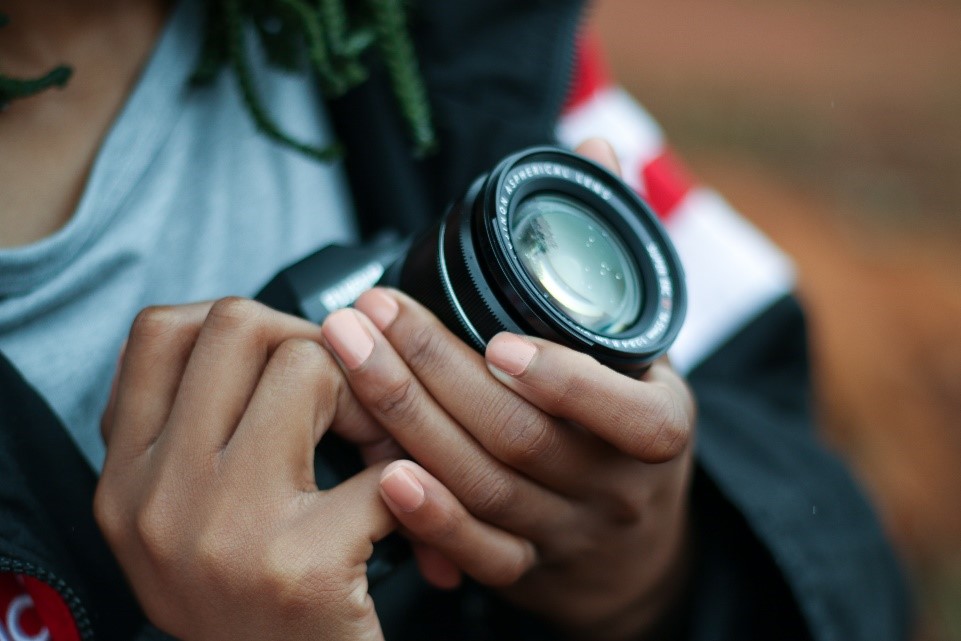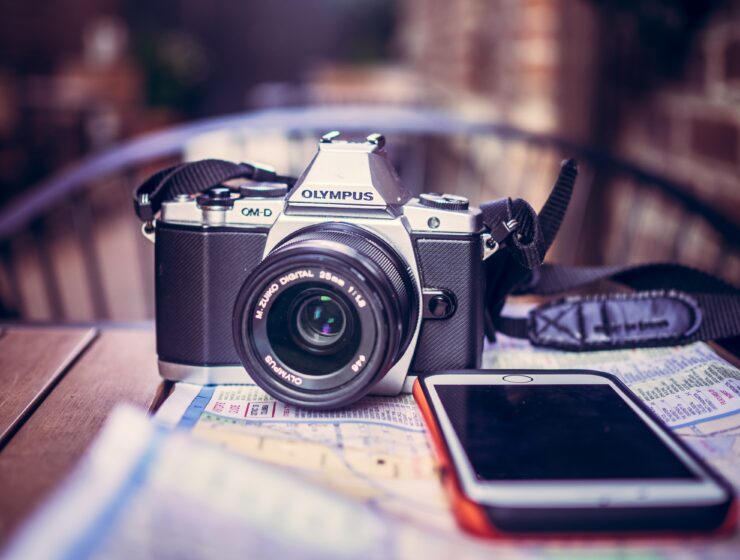One, two, strike a pose. In the ever-evolving world of photography, knowing which gear is essential for your photography medium is key. You wouldn’t want to purchase the wrong lens mount adapter or incorrect telescopic lens!
This blog is a brief guide to DSLR photography gear, one of the three categories featured in the K12 In-Focus Photography Competition.
Whether you’re a beginner or a seasoned pro, this guide will help ensure you’re equipped with the right gear for impressive entries in any photography competition.

DSLR Photography: Capturing Perfection
DSLR stands for Digital Single-Lens Reflex camera, and it is a type of digital camera meaning it doesn’t require any physical film. DSLR cameras differ from point-and-shoot cameras because DSLR cameras use the same (or a single) lens for viewing and capturing images. DSLR cameras use larger image sensors for capturing images, so they result in higher quality photographs than point-and-shoot cameras. Larger sensors also minimize blur and noise and can capture a higher dynamic range.
DSLR cameras have faster focusing shutter speeds, which allows you to take images one after the other and it is easier to capture and moving images clearly.
Photographers like DSLR cameras because of the flexibility to change lenses, which offers a wide range of creative options. DSLR cameras also have more and better controls than point-and-shoot cameras. Photographers can adjust things like the ISO, aperture, shutter speed, or white balance to better enhance the outcome of their photos.
Choosing the best DSLR camera for beginners
Many new photographers find that DSLR cameras blend traditional mechanisms with modern digital features. But, choosing the best DSLR camera for beginners can feel like an overwhelming task because there are so many options. Whether you’re prioritizing budget, features, or versatility, keep reading for insights to help you select the best DSLR camera for beginners.
Primary Things to Consider:
Price
Spending too much may dent your budget, and spending too little may impact the quality of your photographs. It is recommended to purchase a recent camera model instead of purchasing DLSR camera bundles that often come with unnecessary or low-quality accessories.
Another option is to purchase a used DSRL camera, but it is important to consider a camera’s shutter count. The shutter count shows you the amount of actuation the shutter has completed, giving you a rough idea of when the shutter needs to be replaced.
Types of Lenses
The ability to swap out lenses is one of the biggest advantages of a DSLR camera. Typically, DSLR bundles come with just one lens that may have limited zoom capabilities. Purchasing a camera with an interchangeable lens system can enhance your photography game. Keep in mind factors such as cost, focal lengths, and investing in high-quality secondhand lenses.
Autofocus and Shutter Speed
If your goal is to capture fast movements, you’ll want to opt for a DSLR camera that has a fast shutter speed – anything above 5 frames per second. However, this may not be totally beneficial for your photography goals so be certain the specific DSRL model will meet your performance and creative needs.

DSLR Gear Essentials for Competitions
When entering a photography competition or just shooting awesome images with friends, understanding different DSRL gear options can boost your photography skills and might help you stand out against the competition.
Prime or Zoom Lens In general, a prime lens, or a fixed lens, only covers one focal length, while a zoom lens covers a range of focal lengths. Adjusting the zoom ring on the lens changes the viewing angle – zoom in on objects by turning one way and zoom out by turning the other way.
Advantages from prime lenses include the cost, which is generally significantly less than a zoom lens. The size and weight of a prime lens is smaller, lighter, and less noticeable than a zoom lens, something to keep in mind if you are shooting on location or for extended periods of time. Professional prime lenses can produce a shallower depth of field because they can achieve apertures as wide as f/0.95, whereas most zoom lenses have a fixed aperture of f/2.8.
Wide-angle and Macro A wide-angle lens is great for capturing landscapes and indoor scenes. They model images like our natural vision. Whereas a macro lens magnifies objects to appear closer or larger than our natural vision perceives. Creatively, this can work to your advantage or against it, depending on your photography goals.
When entering a photography competition, keep in mind judges often look for technical proficiency and unique artistic expression. By using a lens appropriately, you may increase your chances of standing out against other entries.
Accessories
- Tripods are essential for capturing images with long shutter speeds, especially for scenes like nightscape photography. Using a tripod can eliminate shakes that may impact the photo’s sharpness. Tripods also help with framing and are a great addition to DLSR cameras using a large or heavy telephoto lens.

- A stabilizer is an external device designed to hold your DSLR camera in place and minimizes shakes, while providing smoother video footage and sharper still photographs. There are different types of stabilizers, such as handheld, vest or body mounted, motorized gimbal stabilizers, and drone gimbals. The choice of stabilizer should depend on the desired movement of your shot and your photography goals.
- Storage solutions for your DSLR camera are important for its longevity and performance. Luckily there is no short supply of different storage options. A DSLR bag designed to fit your camera with padded dividers for accessories like lenes and flash units are a great way to transport and protect your DSLR camera. Another convenient option is a backpack, especially if you are hiking or traveling in messy terrain. Backpacks with customizable interior sections or pockets will ensure your equipment is as safe as possible.

Professional photographers often use hard cases for their DSLR camera because they provide maximum protection from drops, rough handling, and harsh conditions. Hard cases are excellent for traveling photographers or for those working in extreme environments.
Wrapping Up
Entering a photo competition is an exciting opportunity for photographers of all skill levels to showcase their talent and creativity. With the right gear handy you’ll not only enhance the quality of your photographs, but also better express your artistic vision. While having the best equipment might have its own advantages, your skills, passion, and unique perspectives of photography are what makes your work stand out. So, equip yourself with the essential gear, immerse yourself in the world of DSLR photography, and let your creativity shine. Remember that with the right tools and determination you’re already a winner.
The 2023 K12 In Focus Photography Competition is open to all students in grades K-12. Approved entries are eligible to win a prize package worth up to $1,200, and a People’s Choice Award determined by public voting at the end of the competition. There are three categories for all skill levels: DSLR, Smartphone and Film. Submit your entries by 10/16.




